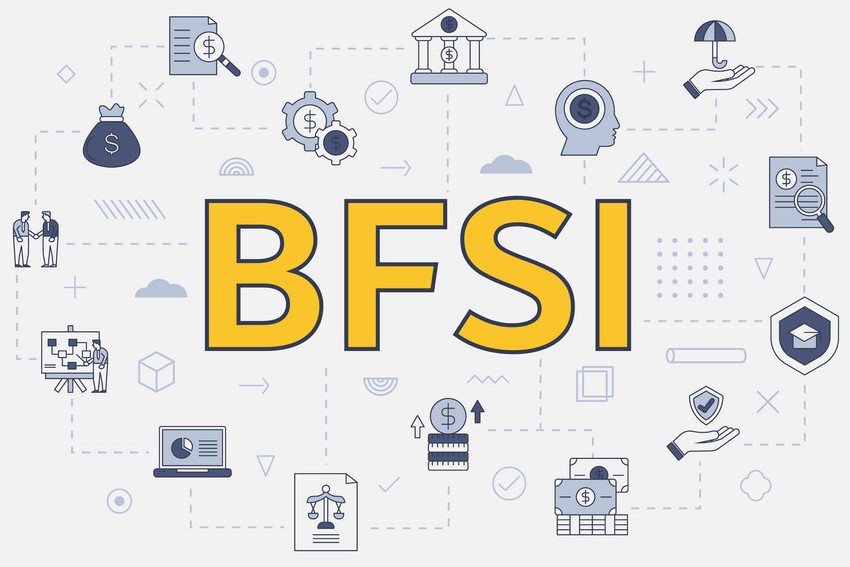.png)
Understanding the dynamics of financial markets is paramount in the realm of finance. These markets serve as the cornerstone of global economic activity, facilitating the exchange of capital, securities, and other financial instruments. This comprehensive guide delves into the intricacies of financial markets, exploring their types and functionalities. From stock markets to bond markets, commodities to derivatives, each plays a unique role in shaping the economy. Investors navigate these markets to allocate capital effectively, manage risk, and pursue investment opportunities. By comprehending their complexities, individuals and institutions alike can make informed decisions to drive financial success and economic growth.
Financial markets encompass a broad spectrum of platforms where individuals, institutions, and governments trade financial assets. These assets range from stocks and bonds to currencies and commodities, each representing a unique opportunity for investors to allocate their capital and manage risk. The primary function of financial markets is to efficiently allocate capital by connecting those in need of funds with those who have excess capital to invest. Through this process, financial markets play a crucial role in driving economic growth, fostering innovation, and facilitating wealth creation.
In addition to their role in capital allocation, financial markets also serve as a barometer of economic health, reflecting the overall sentiment and expectations of investors. Fluctuations in asset prices, such as stock indices or bond yields, can provide valuable insights into the state of the economy and potential future trends. Moreover, financial markets facilitate price discovery, allowing buyers and sellers to determine fair market values for various assets based on supply and demand dynamics.
Furthermore, financial markets serve as a platform for risk management, enabling participants to hedge against adverse movements in prices or interest rates. Derivative instruments, such as options and futures contracts, provide avenues for investors to protect their portfolios and mitigate potential losses. Overall, financial markets play a multifaceted role in the global economy, driving growth, fostering innovation, and providing essential mechanisms for allocating capital and managing risk.
Financial markets can be categorized into several types based on the nature of the assets traded and the method of trading. The major types include:
1.Stock Market (Equity Market)
2.Bond Market (Fixed-Income Market)
3.Foreign Exchange Market (Forex Market)
4.Commodity Market
5.Derivatives Market
6.Money Market
The stock market is where shares of publicly traded companies are bought and sold, providing investors with the opportunity to purchase ownership stakes in these companies and participate in their growth and profitability. This ownership gives investors certain rights, such as voting rights in company decisions and the potential to receive dividends. Stock markets play a crucial role in the economy by allowing companies to raise capital for expansion and investment through the sale of shares to investors.
Stock markets can be further classified into primary and secondary markets. In the primary market, companies issue new shares to the public for the first time through initial public offerings (IPOs). These IPOs represent an opportunity for companies to raise capital directly from investors. On the other hand, the secondary market involves the trading of existing shares among investors. Here, investors buy and sell shares of publicly traded companies on stock exchanges or over-the-counter markets, based on their assessment of the company's performance, outlook, and market conditions.
The secondary market provides liquidity to investors by offering a platform to easily buy and sell shares, thus allowing investors to enter and exit positions as needed. It also facilitates price discovery, as the prices of shares fluctuate based on supply and demand dynamics and new information about the company. Overall, the stock market serves as a vital component of the financial system, enabling capital formation, investment, and wealth creation.
The bond market is where debt securities, such as government bonds, corporate bonds, and municipal bonds, are traded, offering investors a platform to buy and sell these instruments. Bonds function as loans made by investors to issuers, whether they be governments, corporations, or municipalities. In return, issuers promise to repay the principal amount at maturity, along with periodic interest payments throughout the bond's term.
Investing in bonds provides investors with opportunities to earn fixed income, as the interest payments are typically set at a fixed rate or determined by a predetermined formula. This fixed income component can offer stability to an investment portfolio, especially during times of market volatility when stock prices may fluctuate unpredictably. Additionally, bonds offer diversification benefits, as they tend to have different risk and return characteristics compared to stocks and other assets.
Government bonds are generally considered low-risk investments, as they are backed by the full faith and credit of the issuing government. Corporate bonds may offer higher yields but come with varying degrees of credit risk depending on the financial health of the issuing company. Municipal bonds are issued by local governments to fund public projects and typically offer tax advantages to investors.
Overall, the bond market plays a crucial role in the global financial system by providing issuers with a means to raise capital and investors with opportunities to earn income and manage risk through fixed-income securities.
The foreign exchange market is where currencies are traded, acting as the largest and most liquid financial market globally, with trillions of dollars exchanged daily. This market facilitates the buying and selling of currencies, enabling participants to engage in transactions involving different national currencies. Participants in the forex market span a wide range of entities, including central banks, commercial banks, corporations, hedge funds, and individual traders. Each participant brings its own objectives and strategies to the market, contributing to its overall dynamism and liquidity.
Exchange rates, the prices at which currencies are traded, fluctuate continuously based on various factors. These factors include interest rates set by central banks, inflation rates, geopolitical events such as wars or elections, and economic indicators like GDP growth and employment data. Traders in the forex market analyze these factors to make informed decisions about when to buy or sell currencies, aiming to profit from changes in exchange rates.
The forex market operates 24 hours a day, five days a week, across different time zones, allowing for continuous trading sessions. This accessibility and liquidity make it attractive to a diverse array of market participants seeking opportunities to profit from currency fluctuations. Despite its size and liquidity, the forex market can also be volatile, particularly during times of significant economic or geopolitical uncertainty. Overall, the foreign exchange market plays a crucial role in facilitating international trade and investment by providing a platform for the exchange of currencies.
The commodity market deals with the buying and selling of raw materials and primary agricultural products, providing a platform for traders to exchange goods such as metals, energy resources, agricultural products, and precious metals. Metals like gold, silver, and copper are essential components of industrial processes and serve as stores of value, attracting investors seeking diversification and hedging against inflation. Energy resources such as crude oil and natural gas are crucial for powering industries and transportation, making them integral to global economic activity.
Agricultural products like wheat, corn, and soybeans are fundamental staples in food production and consumption, with their prices influenced by factors such as weather conditions, crop yields, and government policies. Moreover, precious metals like gold and silver are valued for their intrinsic properties and are often used as safe-haven assets during times of economic uncertainty or geopolitical instability.
Commodity prices are subject to fluctuations driven by supply and demand dynamics, geopolitical tensions, weather conditions, and global economic trends. Traders in the commodity market analyze these factors to make informed decisions about when to buy or sell commodities, aiming to profit from changes in prices. The commodity market plays a vital role in facilitating trade and investment in essential raw materials, serving as a crucial component of the global economy.
The derivatives market involves financial instruments whose value is derived from an underlying asset, index, or reference rate, serving as a platform for trading various derivative products. These derivatives include options, futures, forwards, and swaps, each offering unique characteristics and purposes. Options provide the right, but not the obligation, to buy or sell an asset at a predetermined price within a specified period. Futures contracts obligate parties to buy or sell an asset at a future date and price, offering a means of hedging against price fluctuations.
Forwards are similar to futures but are customizable contracts traded over-the-counter, allowing parties to tailor terms to their specific needs. Swaps involve the exchange of cash flows based on different financial variables, such as interest rates or currency exchange rates. Participants in the derivatives market include institutional investors, hedge funds, banks, and individual traders, each utilizing derivatives for hedging, speculation, or arbitrage purposes.
By using derivatives, participants seek to manage risk exposure, enhance returns, and capitalize on market movements. Hedgers use derivatives to protect against adverse price movements in underlying assets, while speculators aim to profit from directional price changes. Arbitrageurs exploit price discrepancies between related assets or markets to generate risk-free profits. Overall, the derivatives market plays a critical role in risk management and price discovery in financial markets, providing participants with valuable tools to manage and enhance their investment portfolios.
The money market deals with short-term debt securities with maturities typically ranging from overnight to one year, providing a platform for trading various instruments. These instruments include Treasury bills, certificates of deposit (CDs), commercial paper, and repurchase agreements (repos), each serving as a means for borrowing and lending funds for short durations. Treasury bills are short-term government securities issued to raise funds for government expenditures, offering a safe and liquid investment option.
Certificates of deposit (CDs) are time deposits offered by banks with fixed terms and interest rates, providing investors with a secure way to earn returns on their savings. Commercial paper represents short-term promissory notes issued by corporations to raise capital for operational expenses, typically offering higher yields than government securities. Repurchase agreements (repos) involve the sale of securities with an agreement to repurchase them at a later date, serving as a form of collateralized short-term borrowing.
The money market provides liquidity to financial institutions, governments, and corporations for their short-term funding needs, facilitating efficient capital allocation and cash management. Financial institutions use the money market to meet reserve requirements, manage liquidity, and finance short-term lending operations. Governments and corporations utilize money market instruments to raise funds for temporary cash flow needs or to finance projects with short-term funding requirements. Overall, the money market plays a crucial role in the functioning of the financial system by providing a mechanism for short-term borrowing and lending, enhancing liquidity, and supporting economic activity.
Effectively navigating the global financial landscape necessitates a comprehensive grasp of each market's intricacies. Investors, traders, and policymakers rely on this understanding to capitalize on opportunities while managing risks adeptly. The stock market, where ownership stakes in companies are bought and sold, offers avenues for growth and profitability, with primary and secondary markets facilitating initial public offerings and subsequent trading. In the bond market, investors seek fixed income through debt securities like government and corporate bonds. Meanwhile, the foreign exchange market, with its vast liquidity, sees currencies traded, influenced by factors such as interest rates and geopolitical events. Commodity markets deal in raw materials, impacted by supply-demand dynamics and global trends. Derivatives markets, comprising options, futures, and swaps, provide avenues for hedging and speculation based on underlying assets. Finally, the money market caters to short-term funding needs through instruments like Treasury bills and commercial paper. By staying abreast of these markets' dynamics, participants can make informed decisions, leveraging opportunities while mitigating risks effectively.


Introduction:Explore into what NISM is all about and why it's essential for anyone serious about exc...

Introduction to Mutual Funds:Investing wisely is paramount in today's financial landscape. Mutual fu...

Introduction:The BFSI sector, an acronym for Banking, Financial Services, and Insurance, serves as a...